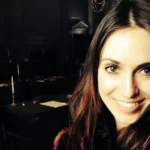THE 2018 EDISON AWARDS
By Elizabeth Dilts and Kristie Ceruti
BOUNDLESS INNOVATION has long been central to the advance, and indeed the very self-conception, of medicine and health care of every conceivable variety. Dentistry, of course, is no different. And although just how much our beloved profession still welcomes and promotes the grand experimentation that’s the lifeblood of discovery is a matter of some debate—see “Lights Out?”—what’s not really up for argument at all is that certain enlightened corners of our industry are populated by the tireless tinkerers who move dentistry forward one development at a time.
Fifteen of those innovations, and the men and women responsible for them, are what we celebrate here. For the fourth year running, Incisal Edge has partnered with the Edison Awards to honor the top new products and most impressive advances dentistry has seen over the past year.
The ingenuity in evidence here was perhaps never bettered than by Thom- as Alva Edison, the awards’ namesake, but today’s dental pioneers nonetheless bring their inquisitive nature and fearsome intellect to the project of solving some of today’s most vexing conundrums: How to deliver safe, effective anesthetic in a manner that is itself not painful. How to make the patient experience of the maligned root canal better. Even how to improve upon the quotidian surgical mask, a product whose evolution seems to have stalled out back when Edison himself was in diapers.
Whatever the overall condition of dental innovation—and we welcome your thoughts on that perennially barbed topic—the people and products on the pages that follow make up, in the aggregate, a remarkable portrait of restless dental innovation. Problems exist to be solved, after all—and that’s no less true in 2018 than it was in Thomas Edison’s prime a century ago. These inventors prove the point—and we suspect all of them are already hard at work on the procedure-easing, mouth-mending, even lifesaving inventions of tomorrow.
About the Edison Awards
SINCE 1987, the Edison Awards have recognized and honored some of the most innovative new products, services and business leaders in the world. The Awards are named for Thomas Alva Edison (1847–1931), whose extraordinary new product- and market-development methods garnered him 1,093 patents and made him a household name around the world. The Edison Awards symbolize the persistence and excellence personified by Edison himself, while also strengthening the human drive for innovation, creativity and ingenuity.
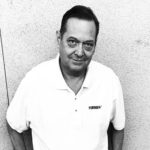
The Periogen Company
Inventor: James “Doug” Andersen
Age: 56
Education: Degree in electrical engineering, DeVry University
WHO KNEW THE secret to getting rid of tartar could be found in chicken nuggets? That’s what James “Doug” Andersen discovered, through trial and error, a decade ago.
Conventional wisdom long held that tartar can’t be dissolved, only scraped. Andersen, who goes by Doug, suffered from tartar buildup and was about to return to his dentist for another painful deep cleaning. Instead of merely submitting to it, he dedicated himself to the study of plaque and tartar’s composition.
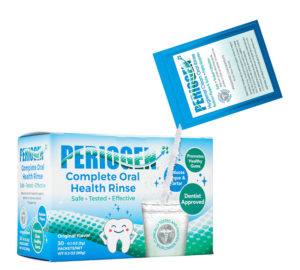
“Periogen is a simple concept,” Doug says. “[Tartar] is inherently unstable and electrostatically attached to tooth surfaces. It wants to come off. Periogen is not much more than a water softener.”
Found in studies to be some 45 percent more effective at tartar removal than brushing alone, Periogen has built a small but dedicated following among American doctors and patients, as well as many in Asia, a hot market for home medical remedies. Cracks John, who’s now chief executive of the San Diego–based Periogen Company: “We grew by word of mouth—pun intended.”

Implant Concierge
Inventor: Bret Royal
Age: 42
Education: Bachelor’s degree in agricultural economics, Texas A&M University
IF A HOTEL CONCIERGE is someone who helps guide tourists’ decisions in an unfamiliar city, an Implant Concierge, perforce, is someone who guides dentists through every step of the complex and sometimes unfamiliar process of treatment planning and implant surgery.
Bret Royal, founder and chief executive of Implant Concierge, launched the company four years ago in San Antonio after recognizing that clients of his CBCT imaging centers needed assistance navigating the highly fragmented process of implant treatment planning. He’d help them obtain high- quality scans, get those scans interpreted by board-certified radiologists and prepare surgical guides for them.
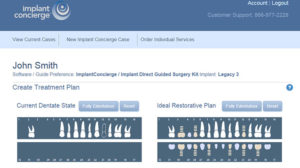
The dentist first uploads a CBCT scan and a diagnostic cast or intraoral impression. Implant Concierge then converts the 3D DICOM data, prepares the diagnostic treatment plan and, after a web conference between the dentist and one of Royal’s 40 staffers, 3D-prints a patient-specific surgical guide—tailored to the equipment in the practice where the surgery will be done—and sends it to the dentist.
It’s essentially “a virtual employee,” Royal says—one that gives dentists the full confidence they need to complete a successful procedure. “The surgery is more precise, and the implant is placed in the ideal restorative position,” Royal adds. “It gives dentists a lot more precision, and patients a much better outcome.”

Paul Zhivago, DDS
Inventor: Paul Zhivago
Age: 40
Education: DDS, New York University College of Dentistry
PARK AVENUE IN Manhattan is home to (among others, of course) the extraordinarily well-heeled, who want only the best appurtenances of a luxurious life: the top-ranked private schools, the most well-appointed health clubs and—naturally—the finest dental practices.
So when prosthodontist Dr. Paul Zhivago introduces patients at his Park Avenue office to the technology he uses to make digital impressions, he has a great line: “I use software that’s used [to create] the dragons of ‘Game of Thrones’ and various characters from Marvel Studios.” Last year, attending a convention in Los Angeles, he met some of these television-and-movie digital- and special-effects artists. “I was amazed at what they can do with it,” he says. “They were surprised I use it for dentistry.”
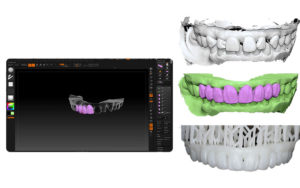
Using a 21-inch Mac monitor, a stylus and Zbrush software, Dr. Zhivago says he can “sculpt in a three-dimensional environment” what a patient’s mouth would ideally look like post-op. Creating such an image with someone present in the chair, he says, dramatically alters the doctor-patient dynamic, making the latter feel much more like a participant in the restoration. “We can remodel and change the wax-ups chairside,” he notes. “The patient is more actively involved and can give instant feedback.”
Dr. Zhivago teaches the workflow to his prosthodontic students at NYU Dental, his alma mater. It’s best for demanding restorations. “The level of detail I can achieve is unmatched by any digital-dental software at this point,” he says.
After he finishes showing a patient how CGI technology can beautify his mouth, Dr. Zhivago makes a 3D print of the design for the patient to take home—just a little bit of Tinseltown magic crafted in the comfort his Park Avenue practice.
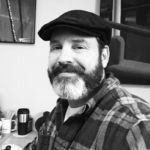
Young Dental
Inventor: Todd Korup
Age: 48
Education: Self-taught artist and designer
TOPICAL FLUORIDE application has been trudging slowly into the twenty-first century, leaving behind those bulky Styrofoam trays that patients of (ahem) a certain age remember well. Starting a decade or so ago, hygienists began channeling their inner Bob Ross, taking a painterly approach by holding a fluoride palette in one hand and a brush in the other.
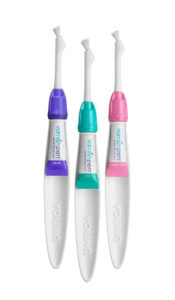
“The beauty of Varnish Pen is in its simplicity,” says Steve Wright, director of global marketing for Young Dental and a member of the Varnish Pen innovation team. “Most clinicians can pick the product up, never having used it before, and intuitively know how it works.” It’s 50 percent faster than traditional fluoride application, and a heck of a lot less messy.
Patients will notice better flavors and the thinner, smoother feel of Varnish Pen’s fluoride formula, Wright says. “Traditional fluorides could discolor teeth, and the thick application can have the patient leaving the office feeling, as one hygienist once told me, ‘like they’re wearing an itchy sweater on their teeth,’ ” he says. No more: After the nearly seven years his team spent on research, development and testing, Wright notes, 93 percent of dentists reported a better patient experience with the Varnish Pen. And hygienists can indulge their Bob Ross tendencies after hours.
360 Face Masks
Cranberry
Inventor: Alen Kwong
THE SURGICAL MASK dates to the 1890s, and seemingly hasn’t been updated since. Alen Kwong, head of business development for 360 Face Masks—made by Cranberry, a company in Pinole, California—puts forth a good question: Faces aren’t square. Why should masks be?
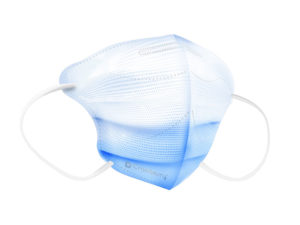
Full-face coverage is critical given that—as you’re well aware—just about every dental procedure imaginable involves at least some blood and saliva. The 360 mask’s four layers of fabric capture more than 99 percent of bacteria and other particles. To flatten a fresh mask to place in its package, Cranberry folds it along the round seam that runs from the bridge of the nose to below the chin. When popped open, the resulting structure is rigid enough to ensure it won’t collapse when the wearer inhales. When the wearer exhales, meanwhile, the mask’s anti-fog fabric around the mouth absorbs all that hot air.
The 360 is affordable, too: just pennies per unit more than traditional square masks. It’s therefore an affordable switch—unless your practice is full of blockheads and you don’t need to. But we’re pretty sure that’s not the case.

Benco Dental
Inventor: Richard Cohen
Age: 47
Education: B.S., New York University Stern School of Business
WORRIED ABOUT a potential recession? Benco Dental managing director Richard Cohen is. Not so much the economic variety, though—he’s mainly concerned with gum recession.
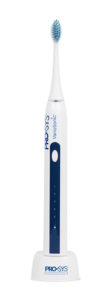
Hence this Pro-Sys, the first electric brush released under this particular Benco product line from the company’s headquarters in Pittston, Pennsylvania. It comes with five heads ranging from ultra-soft to firm, and a user can choose from among five speed settings. The range of speeds and bristle stiffness, Cohen says, ensure that anyone can find just the right combination.
Think of it like a Sleep Number mattress, he points out: The VarioSonic’s adjustable features enable everyone to find their “number.” (Cohen’s personal settings: the V180 extra-soft brush head at the brisk speed setting number 5.) “This is a brush for all mouths,” he says, “but also for people with sensitive gums.” You might not be able to do anything about the national economy, after all, but keeping your gums in shape will give you one fewer thing to be concerned about.
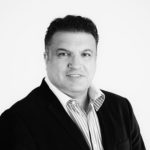
Biodent
Inventor: Sargon Lazarof
Age: 57
Education: DDS, University of Southern California School of Dentistry
AROUND 20 PERCENT of Americans report a fear of needles and syringes. Such anxiety is so widespread, says Dr. Sargon Lazarof—inventor of NumBee, a needle-free anesthesia applicator—that it even affects a number of dentists themselves.
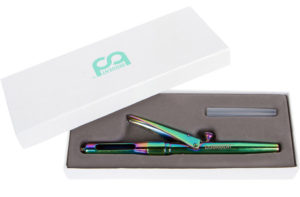
Another advantage: Unlike block anesthesia, NumBee deadens only one tooth at a time, so the whole-mouth hilarity that is a staple of dental anxiety need not follow. Dr. Lazarof notes that his patients often don’t realize he’s used the NumBee on a tooth, because the rest of their mouth feels normal.
The product has been a runaway success since its debut, especially with pediatric dentists, and Dr. Lazarof says NumBee can be attached to nearly any device for about the same cost as using the dreaded—ouch!—needle. “It’s ideal,” he notes, “for children and for general practice where you do a lot of individual fillings.”

Inventor: Michelle Vacha
Education: B.S., Northern Arizona University
THROUGHOUT THE U.S., dentists and hygienists alike increasingly report a problematic inverse relationship between older patients and proper dental care. The older the patients, the greater their oral-health needs—yet they make dental appointments less and less frequently.
Registered dental hygienist Michelle Vacha observed this phenomenon herself while working at a private practice in Arizona. Her senior patients, she says, had a much harder time finding their way to see her. “The few who did, especially those living in nursing homes, were in such advanced states of disease and neglect, I could tell they weren’t getting their teeth brushed on a daily basis, let alone treated,” she says.
“I realized it would be much easier to bring my skills to them, where they live.”
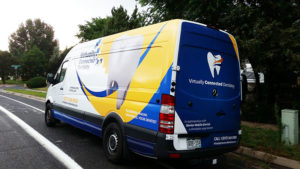
Founded in 2007 and based in Colorado Springs—the Centennial State is one of 40 that permits hygienists to work without an accompanying dentist—Senior Mobile Dental now encompasses a traveling team of 15 employees, subcontractors and volunteers who treat patients in nursing homes throughout the area. Vacha’s group sets up shop inside long-term care or skilled-nursing facilities. Often, nearly everyone present in a standard practice will be there: dentist, hygienist, dental assistants, denture and X-ray technicians, even a receptionist.
The crew typically sees up to 10 patients a day, most of whom exhibit advanced oral decay. Vacha says that although her group aims to provide treatment such as extractions and denture fittings, many patients aren’t in good enough shape for such procedures and will instead choose palliative care to relieve their most uncomfortable symptoms. For these patients, Vacha’s team works to promote basic oral hygiene. Then, through Senior Mobile’s tele-dentistry, they’ll check in with their charges every one to three months to monitor and treat any subsequent pain or infection.
One patient in particular stands out in Vacha’s memory: a woman too embarrassed by her teeth to attend her granddaughter’s wedding a few weeks hence. Senior Mobile was able to get her shipshape, and when Vacha’s team visited her later for a follow-up, she had photos of the ceremony to show them. “She brought pictures of her with the bride,” Vacha says, beaming. “Two beautiful women celebrating the happiest day together.”
Sisu NextGen Mouthguard
Akervall Technologies
Inventor: Sassa Akervall
Education: B.A., Lund University, Lund, Sweden
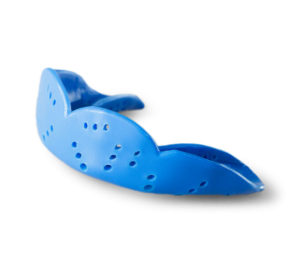
Akervall Technologies, based in Saline, Michigan, knows the statistics, and its SISU NextGen Sports Mouth Guard just might be the most comfortable, least obtrusive such device on the market. It’s just 1.6 millimeters thick and made of non-compressible thermoplastic that absorbs and disperses impact handily. What’s more, its slender configuration enables an athlete to talk, breathe and even drink normally while wearing it.
Anyone more accustomed to the bulky, clunky mouthguards of yore might scoff. Yet Mathew Odigie, a Chicago-based Red Bull marketing director who runs the YouTube channel “I Know Football” (that’s soccer to you), swears by NextGen. He recently filmed an episode of his show while wearing one, and the difference in his enunciation and comprehensibility was negligible.
Akervall Technologies’ CEO, Sassa Akervall, is convinced SISU NextGen’s moment has arrived. “We were able to find a niche in the athletic market,” she said in a recent press release, “with a comfortable mouthguard that offers superior comfort and protection.” The Steph Currys of the world—or at least their weekend-warrior analogues—will surely thank her.
Kovanaze Nasal Spray
St. Renatus
Inventors: St. Renatus’s team of oral-health experts
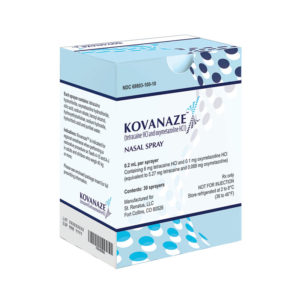
Wouldn’t it be easier if you could simply say, “Take a quick sniff of this, and we’ll be ready”? (And aren’t rhetorical questions a hoot?)
Indeed it would. And so the team of experts at Fort Collins, Colorado–based St. Renatus—named, fittingly, after the patron saint of anesthesia—have developed the first FDA-approved nasal anesthetic to numb a patient’s maxillary arch without a needle. Kovanaze’s formula uses tetracaine and oxymetazoline, two elements common in nasal sprays, to numb teeth 5 through 12 with 96 percent effectiveness, and teeth 4 through 13 with 64 percent effectiveness. It can be used on any patient who weighs at least 40 kilograms, or about 88 pounds.
It takes just a moment to do its work, but it took St. Renatus 11 years to develop—a project that required the services of chemists, health-care professionals and regulatory experts alike. “By removing the need for injections in select procedures, we can help people overcome their fear of dentistry,” says Dr. Michael Smilanich, St. Renatus’s chief dental officer, “and complete the dental treatment they need.”

ContacEZ
Inventor: Daniel S. Kim
Education: DDS, Seoul National University, South Korea; prosthodontist training, Hangju Christian Hospital, South Korea
IF NECESSITY IS the mother of invention, uniqueness is right there in the family tree as well. Daniel Kim, a dentist in Vancouver, Washington, has been making his own tools for use on patients for most of the 30 years he’s been in practice.
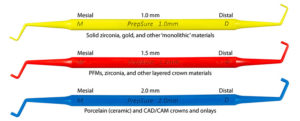
His latest invention, PrepSure, is a set of three instruments used to make sure that a patient has adequate occlusal clearance for a crown. Before, doctors had to rely on a mere visual guess, or ask a patient to bite on a piece of contact paper to identify how much of a tooth’s structure needed to be reduced. Studies have found that as much as 80 percent of crown preps do not have enough occlusal clearance— leaving a too-high one of every five procedures after which a crown is more likely to fracture or perforate.
“I’m confident that I’m a pretty good dentist,” Dr. Kim says. “But once in a while I’d get a call from the lab saying ‘Dr. Kim, the occlusal clearance is not enough.’ ” Since he developed PrepSure, those calls have ceased—saving him time and his patients the burden of another impression. “It’s very simple,” the doctor says of his latest brainstorm, “but it has huge benefits.”
Rapid Readout Attest System for Vaporized Hydrogen Peroxide
3M Health Care
Inventors: 3M’s team of oral-health experts
INFECTIONS ARE no fun. They’re expensive as sin, too: Patients who contract an infection after a surgical procedure will spend an average of $60,000 to get better. Americans, in fact, spend $10 billion every year to treat infections, and since 2008, Medicare and Medicaid no longer reimburse costs associated with treating preventable health-care-associated infections.
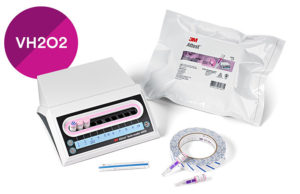
Well, sort of. Rapid Readout lives up to its name, delivering biological indicator results for vaporized hydrogen-peroxide sterilization in just 24 minutes— that’s down from four hours, the time it used to take to get B.I. results with 3M’s Attest 1295 device.
Labs and oral-heath professionals rely on such biological indicators to tell them that a load of instruments in the sterilization chamber has been adequately cleaned. Rapid Readout kills all microorganisms present in under half an hour. It also links up, handily, with most current instrument-tracking software programs, enabling a practice to record and track the sterilization of each instrument load every time to ensure accuracy and consistency.
Shortening the time required to complete an important procedure from four hours to 24 minutes will save dentists and their teams time that can be measured in weeks over the course of a year, all with no reduction in quality. Which means total reduction of infection risk. Which means satisfied patients—and happy dentists.
Vivarra Patient Engagement App
Vivarra Interactive
Inventor: Micaela Blondin
Age: 28
Education: B.A., Alberta College of Art and Design, Calgary, Alberta
HARRIED PARENTS of crying, cranky children know that twenty-first-century technology can be a lifesaver—albeit very much a mixed blessing. Rarely, though, has a mobile tool worked quite as well to calm an overly anxious moppet as Vivarra’s new augmented-reality app will in the dental office.
All a patient has to do is hold his or her phone or tablet up to the mural-bedecked walls of a Vivarra-outfitted reception area, and a menagerie of lions and tigers and bears—oh my!—will spring to life, taking the nervous child on a rollicking adventure meant to be a distraction from one’s fears.

Designed with support from Imagination Dental Solutions, a company that decorates practices with toys and murals to enthrall young patients, Vivarra lets a dentist choose one of six themes: jungle, space, underwater, woodland, safari or beach. It then personalizes the app for the doctor’s particular office, incorporating their logo and other unique images, then providing illustrated materials and wall placards to hang or stick to the floor. Patients or their parents then download the app to be instantly swept away to an adventurous world that feels like it’s just for them—and that acts, the company notes, “like a primer for the child’s appointment.”
Based in Calgary, Alberta, Vivarra is currently testing the app at offices around the U.S. and Canada, and on its staffers’ children. Blondin says the company hopes to expand beyond dental into the offices of orthodontists, pediatricians and hospitals.

Carestream Dental
Inventor: Stephane Varlet
Age: 47
Education: Valentine-Labbé High School, Lille, France
WHEN YOU MAKE one of the best 3D-imaging tools in the oral-heath-care industry, more people will want to use it. That simple truism is what led Stephane Varlet and his team in Marne-la-Vallée, France, just east of Paris, to develop the CS 8100SC, the newest member of Carestream Dental’s CS 8100 family of devices.
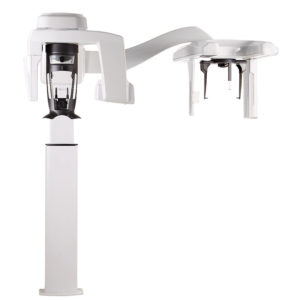
He likens it to the ease and futuristic user experience of a driverless car. “The only action you’d have to take is to click ‘start,’ and it drives you where you want to go in a safe, relaxing way,” he says. “[The CS 8100SC 3D] is an easy-to-use, affordable extraoral system that allows oral-health-care practitioners to acquire best-in-class images in a fast, accurate way for peace of mind.”
GentleWave System
Sonendo
Inventors: Sonendo’s team of oral-health experts
“IT WAS VERY SCARY.” “Pain and discomfort.” “It was worse than childbirth.”
Boy, do root canals ever get a bad rap. Those sentiments were voiced by actual patients describing their feelings about the procedure, and they’re used by Laguna Hills, California– based Sonendo to help promote GentleWave System, its root-canal treatment.

Crucially, patients feel less pain as a result. According to Restorative Dentistry, just 3 percent of patients experienced post-treatment discomfort; the balance healed successfully with no additional treatment needed a year later. GentleWave comes with two sterile handpieces and a touch screen to guide you through the procedure—added reassurance that your root- canal patients, post-op, won’t be cursing you with complaints the way so many might otherwise be tempted to do.
THE INCISAL EDGE AWARDS
The 2018 Edison Awards ceremony takes place April 11 in New York, but we’re getting a jump with our carefully curated picks of the dozen top new dental products of the year.
XP Pro Thin Instruments
American Eagle Instruments
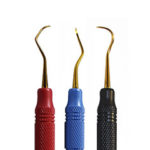
Functional for both dentists and hygienists, these tools feature thinner blades and lighter handles for greater tactile sensitivity and better access to periodontal pockets. According to XP Pro, based in Missoula, Montana, its Sharpen- Free Instruments set obviates standard stainless or carbon instruments’ need for regular honing thanks to its proprietary process that hardens the stainless steel and protects it with a diamond-like layer.
Other attributes: The instruments adapt easily to a variety of tooth surfaces, and their lighter handles offer superior ergonomics. Superior durability, too: XP’s all-important “stroke test” showed that its tech dispatched 10 times the strokes with just one-tenth the wear. If only everything else you deal with every day—your clothes, your car, your spouse—could say the same. Can’t have everything, apparently.
Mouth Mate
Armor Dental
Shields up! Prepare to help your patients defeat pain, protect their mouth and heal at home after dental procedures. (And just maybe save the world while they’re at it.) With its patented adjustable goose neck and specially designed tips in four sizes, Armor Dental’s Mouth Mate—as easy to use as a toothbrush—will protect weak spots in the ol’ food-hole from painful contact during brushing.
It’s versatile, too: After extractions, implants or bone grafts, the U-shaped tip is ideal; following wisdom-tooth or gum surgery, or to safeguard canker sores, the circular tip is on point. For periodontal procedures, biopsies and ortho patients? The oval tip (literally) has it covered.
Typically, patients have heretofore had few options to support their recovery at home. Now, though, Mouth Mate deputizes people to be their own best oral advocate, decreasing plaque and inflammation, reducing unplanned office visits and helping patients return to a normal routine all the faster.
Mouth Mate can also retract the inner cheek near challenged areas caused by plaque buildup or gingivitis, making it simpler to brush. It’s a parents’ helper, too, providing little hands with easier access and little eyes better visibility. And in a sense, improving kids’ oral health is saving the world. There’s nothing, it seems, that Mouth Mate can’t do.
Super Fiber Post
iLumi Sciences
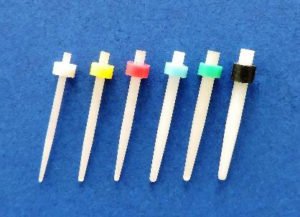
Touting more than 5x radiopacity for extra detail and X-ray visibility, as well as unparalleled light transmission, the post generates a more complete polymerization of resin cement than its competitors. At the root of its capabilities: fracture reduction based on a low modulus of elasticity. Color-coded stoppers on each of six sizes indicate the necessary diameter and demarcation. It’s made in the U.S. and is non-corrosive. It’s also bio-compatible—and how many of those Tinder right-swipes can you say that about?
TPH Spectra ST Universal Composite
Dentsply Sirona
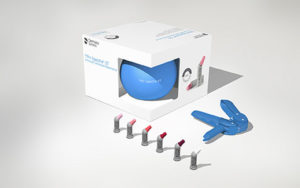
The proprietary method behind its composite- filler technology, SphereTEC, is, frankly, a work of art in itself. Manufacturing micro-scaled spherical superstructures from sub-micron glass might sound dauntingly scientific, but aesthetics and handling go, well, hand in
hand with the composite’s durability. Both high and low viscosity accommodate personal preference and placement-technique efficiency; it achieves complete coverage of the 16-shade VITA range with just five shades. It polishes to a high gloss, too, and offers excellent stain resistance. And now we’d like to challenge somebody to make the case that your work doesn’t belong in the Louvre. Anyone?
Practice GPS Navigator
Sikka Software
Full speed ahead. All bases covered. Expectations exceeded.
Sound enticing? Sure does—and the team at Sikka Software bases its services on the understanding that every successful business, whatever the industry, must overcome its missed opportunities and wasted time to end up happily in the profitability zone.
Working through Practice GPS Navigator, then, Sikka gives every dental practice a real-time dashboard with quick access to a variety of KPIs, or key performance indicators, to help you take immediate action: Increase hygiene opportunities, track insurance coverage, easily tabulate daily production and collection totals against benchmarks, fill open appointment slots via smart text and email targeting.
It’s smart all the way down, in fact: Sikka offers compatibility with all practice-management systems, and securely encrypts patient data (unlocked only via your unique credentials) for 100 percent HIPAA compliance. Get Sikka, and get set: Management of your practice will never be easier, or more reliable.
Harmonize
KaVo
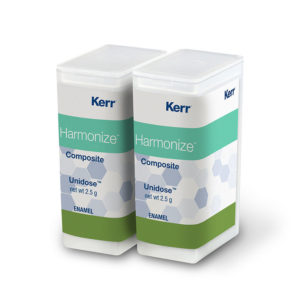
There is, we feel honor-bound to note, one exception: Whereas a butt-kicking Amazon warrior goddess tends to stand out in a crowd, Harmonize’s superior blending capabilities will, as the product’s name implies, have your patients wondering where exactly the restoration ends and their tooth begins.
A unique nanoparticle filler network refracts and diffuses light for a close resemblance to enamel; KaVo’s ProGloss will then deliver a supreme, consistent polish. Easier sculpting and holding power without stickiness, meanwhile, save vital time during the trimming and finishing phase. Harmonize’s signature Adaptive Response Technology certainly sounds like a superpower to us. Even better: No tiara required.
ElectroMatic Premium
KaVo
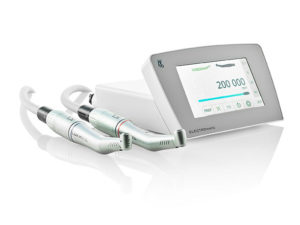
It all works like a dream, but will the ElectroMatic Premium—unlike Danny and Kenickie’s gravity-defying pompadours and daddy-o argot—stand the test of time? Its scratch-resistant Dragontrail glass display with color touch screen is six times harder than standard glass, and its easy-to-clean surface will keep it looking good for years to come. On the downside, it’s not a whole lot of fun at the drive-in. But perhaps KaVo is working on that.
NovaBackup
Novastor
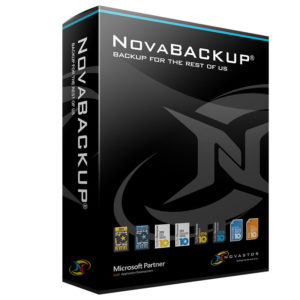
NovaStar’s expertise runs the gamut; it has developed end-to-end protections systems for small- and medium-sized companies, government institutions and local data centers across a number of industries. Which is all well and good—but it’s your patient and practice info that truly matters, and NovaStor’s installation assistance and U.S.-based support ensure that your most precious collection of 1’s and 0’s will never go missing again.
Weave
Weave
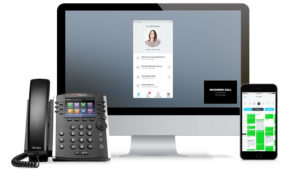
Weave’s Smart Caller ID leavens the chaos of a busy front desk by blessing your team with one fewer thing to worry about and presenting essential patient details the moment you need them. The goal of the software platform is to combine all communication streams—your practice-management software, your mobile devices, your business phone—into one simple tool. Simplicity and all the info you need, right at your fingertips. An immaculately organized practice from top to bottom? Yeah, there’s an app for that.
PaX-i Insight
Vatech
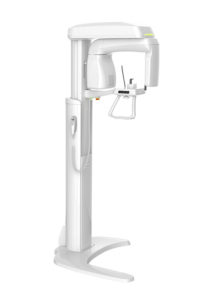
Better still: That rapid ceph tech isn’t even the most notable feature of Vatech’s latest groundbreaker. Hidden multi-roots and canals, location of pulp and gutta-percha, broken file and root fractures are all in your field of vision of Insight’s in-depth view capability. Case studies released by Vatech show that visible fractured roots are often missed by conventional panoramic images with a single layer. Using PaX-i Insight’s “multi-slice” mode, clinicians can discover buccal roots by examining each root and its perio ligament separately.
The device’s user-friendly EzDent-i software interface gives a boost to your treatment planning and patient-consultation efficiency. And we can’t help but be captivated by that lowercase “i.” iPad. iPhone. PaX-i Insight. Sleeker, faster and—yes—better.
Bond Apatite
Augma Biomaterials
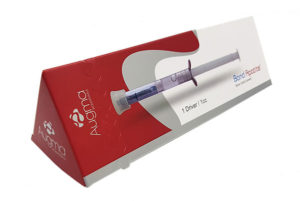
Augma, an Israeli company that develops bone substitutes, unites innovation (synthetic HA particulate, hydroxyapatite granules) and 100 years of proven success (pure bisphasic calcium sulfate, or BCS) for the best of both worlds. Here’s how it works: Place the graft material into the defect site. Press with a dry pad for three seconds. Close the flap. Really, that’s it. Open sinus lift, socket preservation, bone-defect augmentation, ridge expansion and preservation, even barrier membranes: All of it resides squarely in Bond Apatite’s wheelhouse.
As if truncated healing time and improved outcomes weren’t sufficient motivation, though, Bond Apatite significantly reduces procedures’ overall cost, which can lead to greater patient acceptance. That old truism could stand an update, maybe: Bone augmentation, it seems, can be easy after all.
DENTAL INNOVATORS HALL OF FAME
THE MOST-FORWARD THINKERS in any profession are the ones whose discoveries, pioneering achievements and great works stand the test of time. In dentistry, that means those who have made a colossal impact in a number of ways—whether through product development, service to others, sheer historical import or some combination of the three. For the seventh successive year, Incisal Edge is proud to honor the members of our burgeoning Dental Innovators Hall of Fame—and welcome one new inductee into this exclusive club.
2018 Inductee
Dr. Francis Mouyen
Dr. Mouyen is a French inventor who developed the first digital imaging system specifically for dentists, debuting it (to “gobsmacked” clinicians, he later recalled) at a conference in Switzerland in 1987. He also developed a dental chair with a computer monitor, his digital sensor and an intraoral camera built in. His non-dental inventions include an electric-motor propulsion system for boats and underwater monitors used by researchers studying marine mammals. “It was a very exciting adventure,” he told Incisal Edge several years ago, speaking of his years in dentistry. “But I never look at the past. Today and tomorrow are much more exciting.”
2017 Inductees
Dr. Rafael Bowen
Dr. Bowen invented the first truly effective resin-based dental composite, which he introduced in the 1960; he also played a major role in the development of sealants.
David Schick
Inventor of the Schick Sensor, the first technology that enabled dentists to create and view large, clear intraoral images while exposing patients to less than a tenth of the radiation they’d receive via a standard X-ray.
2016 Inductees
Dr. Richard M. Pelton and Ernest Crane
Pelton and Crane’s epony- mous company, an industry giant, got its start as an modest two-man operation back in 1900. Now, nearly 120 years later, their names remain a byword for dental quality.
Gordon J. Christensen
An educational giant, Dr. Chris- tensen founded Practical Clinical Courses, a continuing-education company for dental students globally. He and his wife, Dr. Rella Christensen, founded the influential newsletter Clinicians Report in 1976.
2015 Inductees
Dr. Robert Meyer
A pioneer in the development of 100 percent water-free vacuum devices, dental separation tanks and much more.
Dr. Lucy Hobbs
The first American woman to earn a dental degree when she did so in 1866, Dr. Hobbs is the inspiration for Benco Dental’s Lucy Hobbs Project, which celebrates and promotes women in dentistry worldwide.
2014 Inductees
Dr. Jack Dillenberg
The inaugural dean of the Arizona School of Dentistry & Oral Health at A.T. Still University in Mesa and a passionate longtime advocate for a community-based dental curriculum.
Dr. Howard Farran
Phoenix-based dentist and MBA; founder and publisher of Dental- town magazine and Dentaltown. com. A self-proclaimed “physician of the mouth” and proponent of dentistry as just a component of whole-body health.
2013 Inductees
Dr. William B. Dragan
Dr. Dragan founded Centrix in 1970; he has developed products including the Mark I, II and III syringes, composite-resin tubes and plugs, and more.
Dr. John V. Borden
Enlisted in the Navy as a dental surgeon and served in both the Atlantic and Pacific theaters during World War II. The inventor of the Borden Air-Rotor, he passed away in 2011 at age 95.
2012 Inductees
Dr. Joshua Friedman
Founder and CEO of dental-product manger AdDent, founder of Demetron Research Corporation and a pioneer in the evolution of light-curing technology.
Jim Glidewell
Founded Glidewell Dental Laboratories in 1970; the company led the industry in developing crowns and bridges, ceramics, removable full and partial dentures, dental implants and more.



